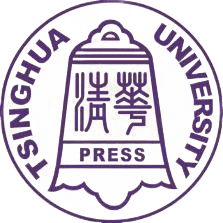Lattice-Hydride Mechanism in Electrocatalytic CO2 Reduction by Structurally Precise Copper-Hydride Nanoclusters
Publication type: Journal Article
Publication date: 2017-07-06
scimago Q1
wos Q1
SJR: 5.554
CiteScore: 22.5
Impact factor: 15.6
ISSN: 00027863, 15205126
PubMed ID:
28640611
General Chemistry
Catalysis
Biochemistry
Colloid and Surface Chemistry
Abstract
Copper electrocatalysts can reduce CO2 to hydrocarbons at high overpotentials. However, a mechanistic understanding of CO2 reduction on nanostructured Cu catalysts has been lacking. Herein we show that the structurally precise ligand-protected Cu-hydride nanoclusters, such as Cu32H20L12 (L is a dithiophosphate ligand), offer unique selectivity for electrocatalytic CO2 reduction at low overpotentials. Our density functional theory (DFT) calculations predict that the presence of the negatively charged hydrides in the copper cluster plays a critical role in determining the selectivity of the reduction product, yielding HCOOH over CO with a lower overpotential. The HCOOH formation proceeds via the lattice-hydride mechanism: first, surface hydrides reduce CO2 to HCOOH product, and then the hydride vacancies are readily regenerated by the electrochemical proton reduction. DFT calculations further predict that hydrogen evolution is less competitive than HCOOH formation at the low overpotential. Confirming the predictions, electrochemical tests of CO2 reduction on the Cu32H20L12 cluster demonstrate that HCOOH is indeed the main product at low overpotential, while H2 production dominates at higher overpotential. The unique selectivity afforded by the lattice-hydride mechanism opens the door for further fundamental and applied studies of electrocatalytic CO2 reduction by copper-hydride nanoclusters and other metal nanoclusters that contain hydrides.
Found
Nothing found, try to update filter.
Found
Nothing found, try to update filter.
Top-30
Journals
|
5
10
15
20
25
|
|
|
Journal of the American Chemical Society
22 publications, 6.45%
|
|
|
Angewandte Chemie
17 publications, 4.99%
|
|
|
Angewandte Chemie - International Edition
17 publications, 4.99%
|
|
|
Nanoscale
16 publications, 4.69%
|
|
|
Inorganic Chemistry
13 publications, 3.81%
|
|
|
Small
10 publications, 2.93%
|
|
|
Journal of Physical Chemistry C
7 publications, 2.05%
|
|
|
Chemical Science
7 publications, 2.05%
|
|
|
Journal of Materials Chemistry A
7 publications, 2.05%
|
|
|
ACS Catalysis
6 publications, 1.76%
|
|
|
Chemistry of Materials
6 publications, 1.76%
|
|
|
Dalton Transactions
6 publications, 1.76%
|
|
|
Chemical Communications
6 publications, 1.76%
|
|
|
Nature Communications
5 publications, 1.47%
|
|
|
Applied Catalysis B: Environmental
5 publications, 1.47%
|
|
|
ACS Materials Letters
5 publications, 1.47%
|
|
|
ACS Nano
5 publications, 1.47%
|
|
|
Aggregate
5 publications, 1.47%
|
|
|
Chemical Reviews
4 publications, 1.17%
|
|
|
ACS applied materials & interfaces
4 publications, 1.17%
|
|
|
Coordination Chemistry Reviews
4 publications, 1.17%
|
|
|
Advanced Science
4 publications, 1.17%
|
|
|
Chemistry - A European Journal
4 publications, 1.17%
|
|
|
Journal of Physical Chemistry Letters
4 publications, 1.17%
|
|
|
Journal of Physical Chemistry A
4 publications, 1.17%
|
|
|
Physical Chemistry Chemical Physics
4 publications, 1.17%
|
|
|
Science advances
4 publications, 1.17%
|
|
|
Materials Chemistry Frontiers
3 publications, 0.88%
|
|
|
Chemical Engineering Journal
3 publications, 0.88%
|
|
|
5
10
15
20
25
|
Publishers
|
10
20
30
40
50
60
70
80
90
100
|
|
|
Wiley
98 publications, 28.74%
|
|
|
American Chemical Society (ACS)
97 publications, 28.45%
|
|
|
Royal Society of Chemistry (RSC)
64 publications, 18.77%
|
|
|
Elsevier
41 publications, 12.02%
|
|
|
Springer Nature
21 publications, 6.16%
|
|
|
MDPI
4 publications, 1.17%
|
|
|
American Association for the Advancement of Science (AAAS)
4 publications, 1.17%
|
|
|
Tsinghua University Press
3 publications, 0.88%
|
|
|
AIP Publishing
2 publications, 0.59%
|
|
|
Oxford University Press
2 publications, 0.59%
|
|
|
Shanghai Institute of Organic Chemistry
1 publication, 0.29%
|
|
|
Frontiers Media S.A.
1 publication, 0.29%
|
|
|
IOP Publishing
1 publication, 0.29%
|
|
|
Science in China Press
1 publication, 0.29%
|
|
|
10
20
30
40
50
60
70
80
90
100
|
- We do not take into account publications without a DOI.
- Statistics recalculated weekly.
Are you a researcher?
Create a profile to get free access to personal recommendations for colleagues and new articles.
Metrics
341
Total citations:
341
Citations from 2024:
99
(29%)
Cite this
GOST |
RIS |
BibTex |
MLA
Cite this
GOST
Copy
Tang Q. et al. Lattice-Hydride Mechanism in Electrocatalytic CO2 Reduction by Structurally Precise Copper-Hydride Nanoclusters // Journal of the American Chemical Society. 2017. Vol. 139. No. 28. pp. 9728-9736.
GOST all authors (up to 50)
Copy
Tang Q., Lee C., Li D., Choi W., Liu C. W., Lee D., Jiang D. Lattice-Hydride Mechanism in Electrocatalytic CO2 Reduction by Structurally Precise Copper-Hydride Nanoclusters // Journal of the American Chemical Society. 2017. Vol. 139. No. 28. pp. 9728-9736.
Cite this
RIS
Copy
TY - JOUR
DO - 10.1021/jacs.7b05591
UR - https://doi.org/10.1021/jacs.7b05591
TI - Lattice-Hydride Mechanism in Electrocatalytic CO2 Reduction by Structurally Precise Copper-Hydride Nanoclusters
T2 - Journal of the American Chemical Society
AU - Tang, Qing
AU - Lee, Chongmok
AU - Li, Dai-Ying
AU - Choi, Woojun
AU - Liu, C. W.
AU - Lee, Dongil
AU - Jiang, Deen
PY - 2017
DA - 2017/07/06
PB - American Chemical Society (ACS)
SP - 9728-9736
IS - 28
VL - 139
PMID - 28640611
SN - 0002-7863
SN - 1520-5126
ER -
Cite this
BibTex (up to 50 authors)
Copy
@article{2017_Tang,
author = {Qing Tang and Chongmok Lee and Dai-Ying Li and Woojun Choi and C. W. Liu and Dongil Lee and Deen Jiang},
title = {Lattice-Hydride Mechanism in Electrocatalytic CO2 Reduction by Structurally Precise Copper-Hydride Nanoclusters},
journal = {Journal of the American Chemical Society},
year = {2017},
volume = {139},
publisher = {American Chemical Society (ACS)},
month = {jul},
url = {https://doi.org/10.1021/jacs.7b05591},
number = {28},
pages = {9728--9736},
doi = {10.1021/jacs.7b05591}
}
Cite this
MLA
Copy
Tang, Qing, et al. “Lattice-Hydride Mechanism in Electrocatalytic CO2 Reduction by Structurally Precise Copper-Hydride Nanoclusters.” Journal of the American Chemical Society, vol. 139, no. 28, Jul. 2017, pp. 9728-9736. https://doi.org/10.1021/jacs.7b05591.
Profiles














